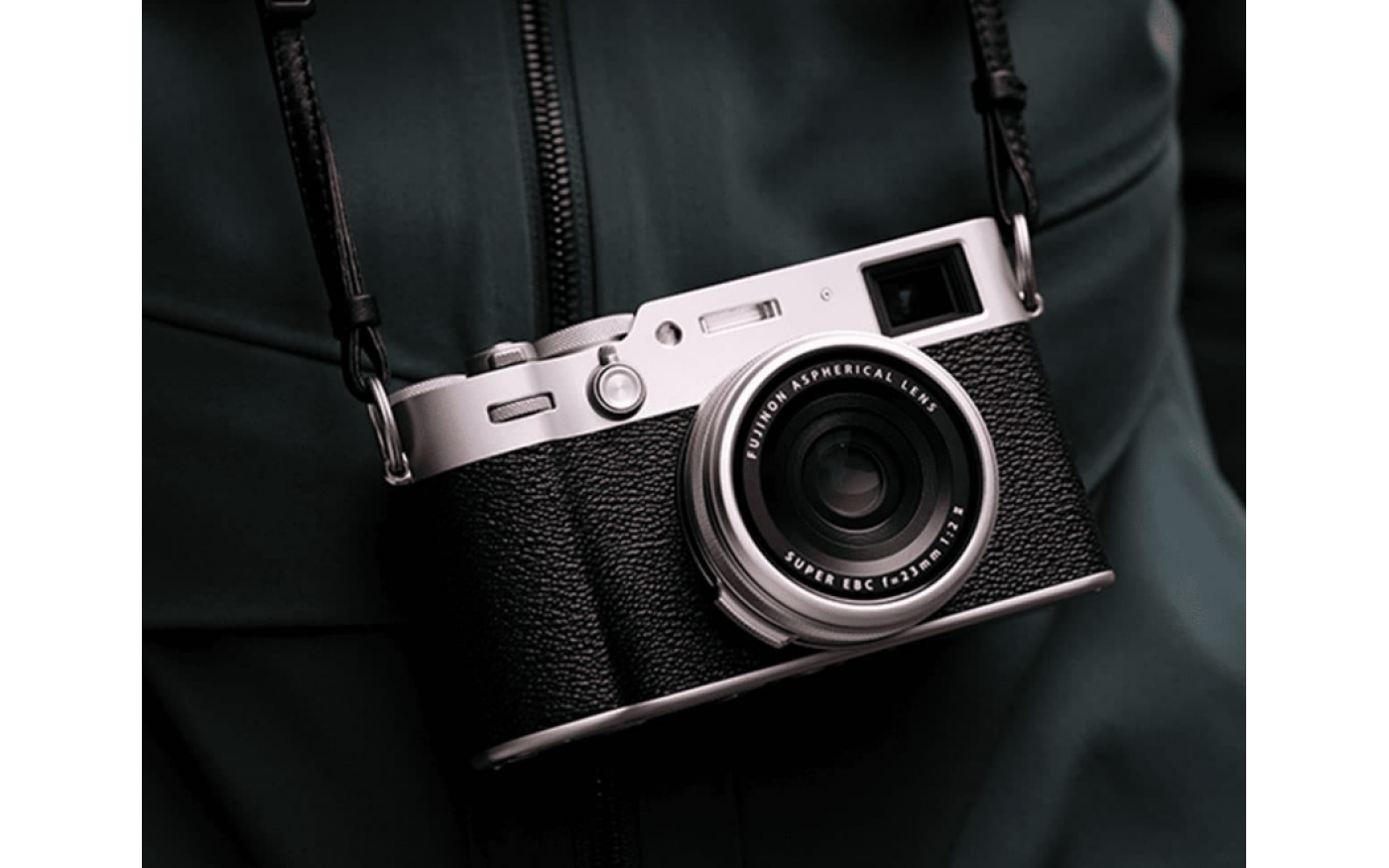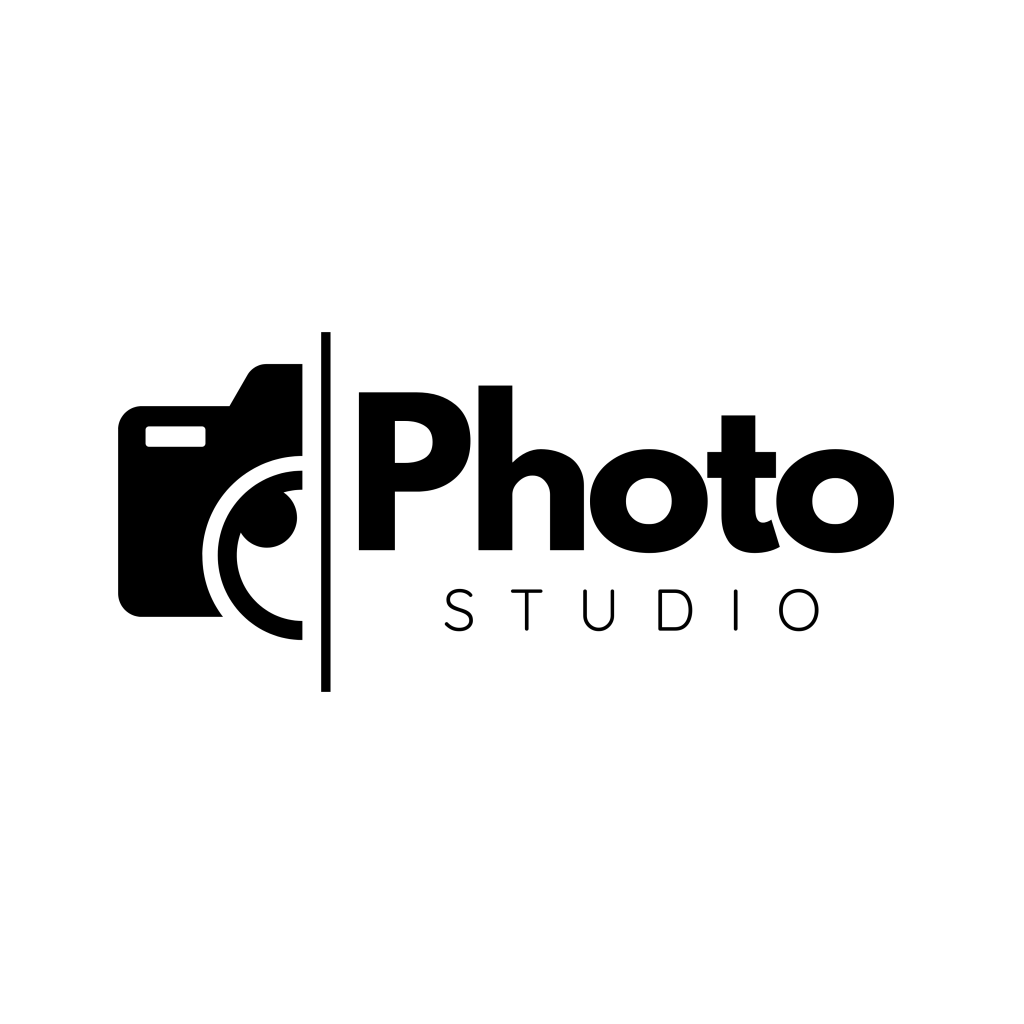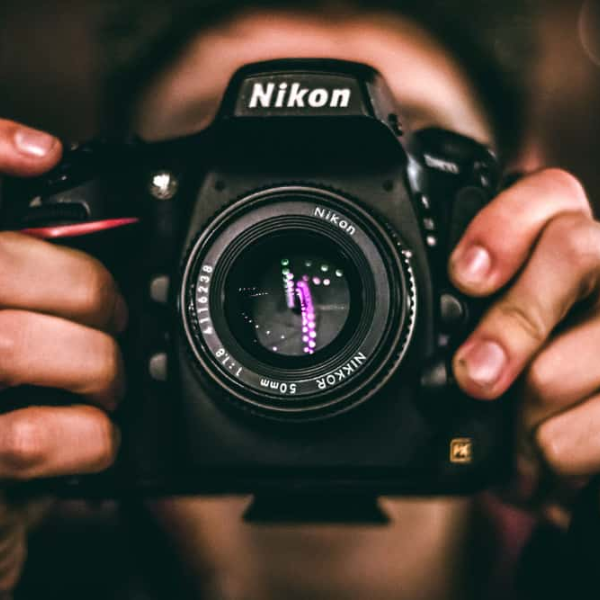Uncategorized
Mirrorless vs DSLR – What’s the Difference?
1. Design and Size
- DSLRs (Digital Single-Lens Reflex): Use a mirror mechanism to reflect light into an optical viewfinder. This makes them bulkier and heavier but often sturdier and better balanced for larger lenses.
- Mirrorless Cameras: Omit the mirror system, allowing for a more compact and lightweight design. However, larger sensors or professional-grade lenses can negate some of the size advantage
Design and Size of the Sony Alpha ZV-E10
The Sony Alpha ZV-E10 is designed with vloggers and content creators in mind, offering a compact and lightweight body with intuitive controls that prioritize ease of use and portability. Its modern design incorporates both functionality and style, making it an attractive and practical tool for creators on the go.

-
Key Aspects of Design and Size
1. Compact and Lightweight Build
- The ZV-E10 weighs only 343 grams (12.1 oz) (body only), making it incredibly easy to carry and handle during extended shoots or travel.
- Its compact dimensions (115.2mm x 64.2mm x 44.8mm) ensure it fits comfortably in a bag or even a jacket pocket, making it ideal for vloggers who need to stay mobile.
2. Simplified Ergonomics for Vloggers
- The camera features an ergonomic grip, specifically designed for single-handed operation, which is essential for vlog-style shooting.
- The controls are strategically placed for quick access, including the record button prominently positioned on the top panel for ease of use.
3. Vari-Angle LCD Screen
- A fully articulating 3-inch touchscreen is one of the ZV-E10’s standout design elements, allowing you to monitor yourself while recording.
- This screen flips outward and rotates, making it versatile for vlogging, selfies, or creative shooting angles.
4. Minimalist Aesthetic
- The ZV-E10 sports a sleek and understated design, available in black or white finishes, blending style with professional appeal.
5. Vlogging-Specific Controls
- A dedicated Background Defocus button lets you quickly switch to a wide aperture for a shallow depth of field, helping the subject stand out against the background.
- The Product Showcase Mode button is another unique addition, perfect for creators who frequently showcase products in their videos.
6. Built-in Directional Microphone
- The ZV-E10 incorporates a 3-capsule directional microphone on the top, optimized for forward-facing audio capture, ensuring clear sound for vlogs.
- The design includes an attachable windshield (deadcat) for outdoor shooting, further enhancing audio quality by reducing wind noise.
7. Lens Interchangeability
- Despite its compact size, the ZV-E10 is part of Sony’s E-mount system, giving users access to a wide range of interchangeable lenses, from wide-angle primes to telephoto zooms.
- This feature adds versatility and creative freedom to its otherwise compact and minimal design.
8. Port and Connectivity Layout
- The ZV-E10 is equipped with multiple ports:
- 3.5mm microphone jack for external audio devices.
- Headphone jack for audio monitoring.
- USB-C port for charging and data transfer.
- Micro HDMI port for external monitor connection or streaming setups.
- The placement of these ports is designed for easy access without interfering with the camera’s overall compact feel.
Why the Design Works for Creators
- Portability: Small enough to be carried everywhere yet powerful enough for professional-quality results.
- User-Friendly Layout: Thoughtful button placement and intuitive controls ensure quick adjustments during shoots.
- Self-Shooting Efficiency: The flip-out screen and ergonomic grip make it easy for vloggers to film themselves with confidence.
- Stylish and Practical: A clean, modern look ensures the ZV-E10 appeals to creators who care about aesthetics as much as performance.
The Sony Alpha ZV-E10 combines thoughtful design with practical features tailored to content creation, making it a fantastic tool for vloggers and creators who prioritize convenience and performance in a compact package.
2. Viewfinder
- DSLRs: Feature an optical viewfinder that provides a real-time, lag-free view of the scene. It’s ideal for photographers who prefer natural visualization.
- Mirrorless Cameras: Rely on electronic viewfinders (EVFs) or LCD screens, which show a digital preview of the scene. EVFs offer benefits like exposure simulation and live histogram but may have slight lag or consume more battery.
-
Sony Alpha ZV-E10 – Viewfinder Details
The Sony Alpha ZV-E10 does not feature a built-in viewfinder, as it is specifically designed for vloggers and content creators who primarily rely on the camera’s vari-angle LCD screen for composing shots. While this design choice enhances portability and keeps the camera lightweight, it may be a limitation for photographers accustomed to using a viewfinder for framing.

-
Why the ZV-E10 Lacks a Viewfinder
- Focus on Vlogging and Video Creation
The ZV-E10 is optimized for self-recording and video content, where the fully articulating 3-inch LCD touchscreen is more practical for monitoring and framing. - Portability
Omitting the viewfinder allows Sony to keep the camera compact and lightweight, which is crucial for creators who need to carry their gear everywhere. - Cost-Effectiveness
By not including a viewfinder, Sony reduces the camera’s cost, making it an affordable option for beginner and intermediate creators.
Alternative Solutions
If you require a viewfinder for specific shooting situations:
- External Viewfinder Options: Use an external monitor or a third-party electronic viewfinder attached via the camera’s hot shoe or HDMI output for more traditional framing.
- Consider Similar Models: If a viewfinder is essential, cameras like the Sony Alpha a6400 (which features a built-in electronic viewfinder) might be worth exploring.
Conclusion
The lack of a viewfinder on the Sony Alpha ZV-E10 reflects its targeted use case as a vlogging and video-focused camera. For users who rely on a viewfinder for photography or specific shooting conditions, alternative accessories or different models in Sony’s lineup may better meet those needs.
- Focus on Vlogging and Video Creation
3. Autofocus
- Historically, DSLRs had faster autofocus using phase-detection systems. Today, most mirrorless cameras feature hybrid autofocus, combining phase- and contrast-detection points for equal or superior performance in stills and videos
-
Sony Alpha ZV-E10 – Autofocus System
The Sony Alpha ZV-E10 offers a state-of-the-art autofocus (AF) system designed for accuracy, speed, and reliability. This robust system ensures creators can focus on storytelling rather than worrying about focus precision, whether for stills or videos.
Key Autofocus Features
1. Dual Detection: Phase and Contrast AF
- The 425 phase-detection points and 425 contrast-detection points work together to provide fast and precise focusing.
- Wide 84% coverage across the image frame ensures your subject remains sharp, even at the edges.
2. Real-Time Eye Autofocus (Eye AF)
- Continuously detects and locks onto human or animal eyes for razor-sharp focus, even when the subject is moving.
- Functions effectively in both still photography and video modes, a major asset for vloggers and portrait shooters.
3. Real-Time Tracking
- Tracks a subject seamlessly as it moves through the frame, combining AI-based algorithms and deep learning for improved accuracy.
- Particularly useful for action shots or dynamic scenes where manual focus is impractical.
4. Product Showcase Mode
- A standout feature designed for content creators who display products.
- Shifts focus instantly from the presenter’s face to an object brought into the frame, then back to the face once the object is removed.
5. Touch Tracking and Touch Focus
- The fully articulating touchscreen allows you to select your subject by simply tapping on it.
- This feature makes focus adjustments intuitive and precise, especially in busy or dynamic scenes.
6. Silent and Smooth Autofocus
- The system operates quietly and smoothly, ensuring a professional look and sound for video recordings without distracting focus noises.
7. Performance in Low Light
- Autofocus works effectively in dim environments with a sensitivity as low as -2 EV, making it suitable for night vlogging or indoor settings.
8. Customizable Focus Settings
- Features like AF speed and AF sensitivity adjustments let creators fine-tune focus transitions for a specific cinematic effect.
Benefits of the ZV-E10’s Autofocus System
- For Vloggers: Reliable Real-Time Eye AF and tracking ensure creators stay sharp in the frame, even while moving.
- For Reviewers: Product Showcase Mode delivers seamless transitions between presenter and product for professional-looking reviews.
- For Action Shooters: Real-Time Tracking keeps up with fast-moving subjects for crisp and dynamic footage.
- For Beginners: The intuitive touchscreen and intelligent AF modes reduce the learning curve, making it easy to achieve great results.
Limitations of the Autofocus
- Challenging Scenes: In very cluttered or crowded environments, the autofocus may occasionally latch onto unintended subjects.
- Rolling Shutter Issues: Rapid pans in video mode can cause distortions that are not directly related to AF but may impact footage quality.
Conclusion
The Sony Alpha ZV-E10 delivers a cutting-edge autofocus system tailored for creators who demand precision and simplicity. With its advanced tracking capabilities, eye detection, and vlogger-specific features, the ZV-E10 ensures sharp and professional results across a range of shooting scenarios. Whether you’re a beginner or a seasoned content creator, its autofocus system is designed to enhance your workflow and creativity.
-
Sony Alpha ZV-E10 – Autofocus Performance
The Sony Alpha ZV-E10 boasts an advanced autofocus (AF) system designed to deliver speed, accuracy, and reliability, making it an excellent choice for vloggers, content creators, and photographers. With features tailored for video creation, the ZV-E10 ensures you stay in focus, even during dynamic and fast-paced shoots.
Key Autofocus Features
1. Fast Hybrid Autofocus System
- Combines 425 phase-detection points and 425 contrast-detection points to achieve fast and precise focusing.
- Covers approximately 84% of the image frame, ensuring consistent performance across most of the scene.
2. Real-Time Eye Autofocus (Eye AF)
- Tracks and locks focus on human eyes in real-time, even when the subject is moving or the lighting conditions are challenging.
- This feature is ideal for vlogging, interviews, and portrait photography, ensuring the subject remains sharp.
3. Real-Time Tracking
- Uses advanced algorithms and artificial intelligence to track moving subjects smoothly and accurately.
- Perfect for action shots, dynamic vlogging, or capturing children and pets.
4. Product Showcase Mode
- A standout feature for content creators who frequently display products in their videos.
- Instantly shifts focus from the presenter to the object being held in front of the camera, then back to the presenter seamlessly.
5. Touch Tracking
- The touchscreen allows users to select a subject simply by tapping it on the screen.
- Once selected, the camera maintains focus on that subject, even as it moves through the frame.
6. Low-Light Autofocus
- Performs reliably in dim lighting, with sensitivity as low as -2 EV, ensuring focus accuracy in darker environments.
7. Silent and Smooth AF for Video
- The autofocus system operates quietly and smoothly, making it ideal for video recording where audible lens movements or abrupt focus changes can be distracting.
Autofocus Advantages for Vloggers and Creators
- Continuous Focus on the Subject: Real-Time Eye AF ensures the creator stays in focus even while moving or speaking directly to the camera.
- Dynamic Adjustments: Tracks fast-moving subjects or products without requiring manual intervention.
- Seamless Focus Shifts: The Product Showcase Mode is a game-changer for review videos or tutorials.
Potential Autofocus Limitations
- Complex Scenes: In extremely busy environments, the autofocus may occasionally prioritize unintended subjects. This can be mitigated by manually selecting the subject on the touchscreen.
- Rolling Shutter in Video: While not directly related to autofocus, rapid movements may cause rolling shutter artifacts that can affect video aesthetics.
Conclusion
The Sony Alpha ZV-E10 delivers one of the most advanced autofocus systems in its class, making it a reliable choice for creators who demand smooth, accurate, and fast focus performance. Whether you’re filming yourself, showcasing products, or capturing action, the ZV-E10’s autofocus ensures your footage looks professional and polished.
.
4. Image Quality
Both DSLRs and mirrorless cameras now offer similar image quality. Full-frame and APS-C sensors are common in both systems, ensuring excellent performance in various lighting conditions. Some mirrorless systems, like Fujifilm’s medium format GFX series, even offer larger-than-full-frame sensors
.
5. Video Capabilities
- Mirrorless Cameras: Tend to excel in video recording, offering faster and more accurate autofocus during video, higher frame rates, and advanced features like 4K/8K support.
- DSLRs: Are catching up but generally lag in autofocus performance during live view or video recording
.
6. Lens Ecosystem
- DSLRs: Benefit from decades of lens development, offering a broader range of lenses, including affordable used options.
- Mirrorless Cameras: Feature lenses designed for compactness and high sharpness but have a smaller selection overall. Adapter compatibility allows the use of DSLR lenses on mirrorless systems
7. Battery Life
DSLRs usually offer better battery life due to their optical viewfinders, which don’t consume power. Mirrorless cameras are improving but require more frequent recharges
.
8. Price
- Entry-level DSLRs are often more affordable than their mirrorless counterparts, making them a popular choice for beginners.
- Mirrorless cameras generally have a higher initial cost but offer advanced features
.
Which Should You Choose?
- DSLRs: Ideal for traditionalists, photographers requiring long battery life, or those who prefer a robust lens ecosystem.
- Mirrorless Cameras: Better for those valuing portability, cutting-edge technology, and superior video capabilities.
Both systems have matured significantly, so the choice depends on personal preferences and intended use. Whether you’re a beginner, a hobbyist, or a professional, understanding these differences helps tailor your decision to your needs.


